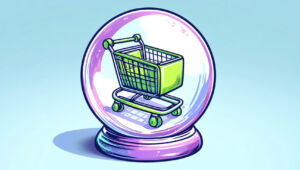The Self-Serve Shift Publishers Can’t Afford to Miss
by on 17th Sep 2025 in News

We examine why publishers are increasingly turning to self-serve platforms. What are the benefits?
In association with DanAds

Advertising tech publishers are striving to maximise their revenue, as the economic climate continues on a precarious trajectory. A large portion of advertisers are tightening their belts, seeking to activate campaigns with reduced budgets, and as a result, directing less spend to publishers. Smaller advertisers particularly are likely to feel the financial pressure, as they attempt to make budgets go as far as possible.
This, combined with the increasing complexity of the digital ad ecosystem, presents a difficult climate for industry players. As tech advances and more solutions become available, there are more options on the table than ever before. Meanwhile, consumers continue to split their time over a broad range of devices and platforms, fragmenting the landscape further and further.
Amidst this, many advertisers are looking to expand their campaign reach, target more audiences, and reach new parts of the globe. The global media market is highly fragmented, spanning so many countries, languages, media brands, platforms, and consumption habits.
Self-serve platforms are hailed as a solution, or at least as a way to ease some of these problems. How effectively can they tackle them?
Attracting new advertisers
One of the main advantages of self-serve platforms is the control they give users over the media buying process. Through self-serve platforms, advertisers or media buyers can be as close to the supply side as they want to be. The need for intermediaries is eradicated. Greater control over campaigns is facilitated: advertisers can log into the platform and manage every aspect of their campaigns, from scheduling ads to audience targeting.
Once campaigns are running, advertisers can monitor campaign performance in real-time, and make immediate adjustments to targeting, budget, or ad creatives. This makes it easier to rapidly adapt to changing market conditions.
All of these features which are advantageous to advertisers result in a beneficial outcome for publishers. They allow publishers to offer advertisers a sophisticated planning, buying, and tracking tool, which they can fully manage themselves. It gives publishers the opportunity to open themselves up to a larger pool of advertisers, and consequently, gain greater revenue.
Unification: Addressing fragmentation
And how can the challenges posed by a fragmented advertising ecosystem be eased? A holistic and agnostic self-serve platform should be set up to manage any kind of media channel, media spend, or activation. This allows advertisers to set up a simplified offering across all of their activity to unify campaigns.
This kind of technology makes campaigns across various countries and even global campaigns possible: the intricacies of running offerings across fragmented regions can be reduced significantly.
Data layers can be added as needed, utilising a different segment for each country. Agnostic platforms are also set up to support any languages, price models or currencies, giving publishers the chance to open their inventory up to buyers anywhere.
Video is now a huge part of advertisers’ campaign efforts, which should be reflected by self-serve platforms. They should enable self-service connected TV (CTV) targeting and buying, as well as supporting social-style video, outstream, and mobile video. Over 60% of UK display spend now goes towards video, the IAB revealed. Meanwhile, almost half of advertisers expect CTV inventory to be biddable this year, up from only 34% last year.
Increasing sustainability
As sustainability becomes an increasingly important matter for the ad tech industry, it’s also worth noting how self-serve platforms can make advertising more sustainable. As emissions from advertising soar, their ability to improve efficiency by facilitating better targeting, and therefore reducing emissions, is a definitive positive for those looking to make their ad practices more environmentally friendly.
Further to the built-in sustainable functionality of self-serve platforms, some also offer additional ways to boost sustainability. TripAdvisor’s AdExpress, for example, has implemented an eco programme which carries out sustainable measures, calculated by the budget of each campaign which is advertised using their platform. The company works with certified environmental organisations to carry out activities including tree planting and removing plastic from oceans, among others.
How does AI supercharge self-serve platforms?
To summarise how AI has been transforming the self-serve platform space: AI is allowing complex systems to stay complex, while humans take a backseat to oversee and control the process.
Looking at the TV space, for example, media companies were once harnessing very simple forecasting methods for linear, carried out by humans. The game changed once digital entered the scene, being incompatible with the previous forecasting methods. Now, its audience impressions which are being forecasted. The size of the calculations are much better dealt with by AI, which can use automation to increase forecasting accuracy.
With AI, campaigns don’t need to be limited to the number of variables we would reach more quickly with our own cognitive abilities. Combining AI’s capabilities with human understanding and analysis, we can arrive at the best solutions.
Additionally, AI can play a key role in strategic planning, serving as a recommendation engine to inform advertisers on what type of media they should be buying, based on historic data about what kind of advertiser they are, or what media channels they are targeting. It can provide more context to advertisers about why they should be buying a particular type of ad inventory.
Following this, AI can recommend how a campaign should be executed, and finally, what optimisations should be made once the campaign is live. Are you meeting your objectives based on the predictions made?
On another note, the inclusion of built-in creative AI tools in self-serve platforms can reduce entry barriers from smaller advertisers. Almost 90% of ad buyers use or plan to use generative AI for video advertising, according to data from the IAB.
Harnessing AI appropriately will also be key in future-proofing businesses. As the world evolves to become AI-first, falling behind on the right tech adoption – both internally and externally – could cause a business’ downfall.
AdvertisingAIFragmentationPublisher










Follow ExchangeWire